The ten commandments are biblical rules and ethical standards forming the foundation of Judaism and Christianity.
Bob Farrell, Wall Street legend, created his own set of commandments. His guidelines provide a foundation to help investors reap and retain market rewards by better understanding the risks.
Disobeying his rules carries no legal or moral punishment but can be harmful to your wealth.
Bob has over 50 years of experience and excellent mastery of psychological factors which drive markets. He is supposedly the first to use the now-common word “sentiment” to help describe market psychology.
For those of you who believe in Bob’s rule #3, “there are no new eras,” we present Bob Farrell’s ten timeless rules on investing. We wish the best of luck for the rest of you who believe this time is different.
This article explains his rules and notably contemplates them in today’s environment. You will not be surprised to learn the market is breaking many of Bob’s golden rules.
Rule #1: Markets tend to mean revert over time
“Reversion to the mean is the iron rule of the financial markets” – John Bogle
Asset prices typically follow trends. Those trends can be up, down, or sideways. They can also be straight or diagonal lines or even oscillating lines. Trends are often linked to fundamental or technical factors.
At times investors are greedy, pushing prices well above trends. Similarly, investors can be overly cautious, and prices fall below trend.
Bob’s first rule reminds us of a rubber band stretched too far. When prices are highly deviated from their trends, like a stretched rubber band, they tend to snap back and usually in a hurry.
A well-followed example is how stocks and indexes trade around their 200-day moving averages (dma). The graph below shows the range in which the S&P 500 (SPY) consistently trades above and below its 200-dma. It is quite uncommon for most stocks and indexes to travel more than two standard deviations from the 200-dma. When it does, the odds of a snapback increase.
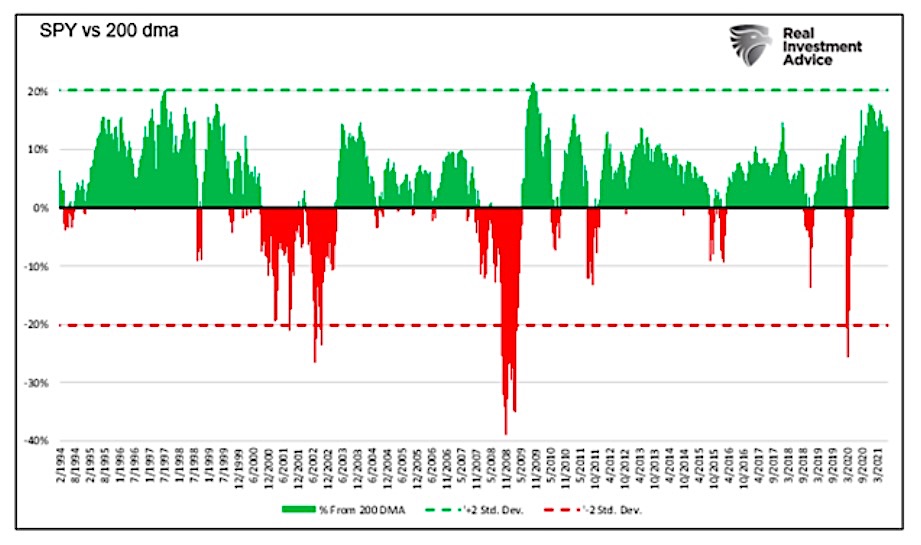
On a long-term basis, the S&P 500 has followed a polynomial trend line. The colored areas below show the percentage deviations from the trend.
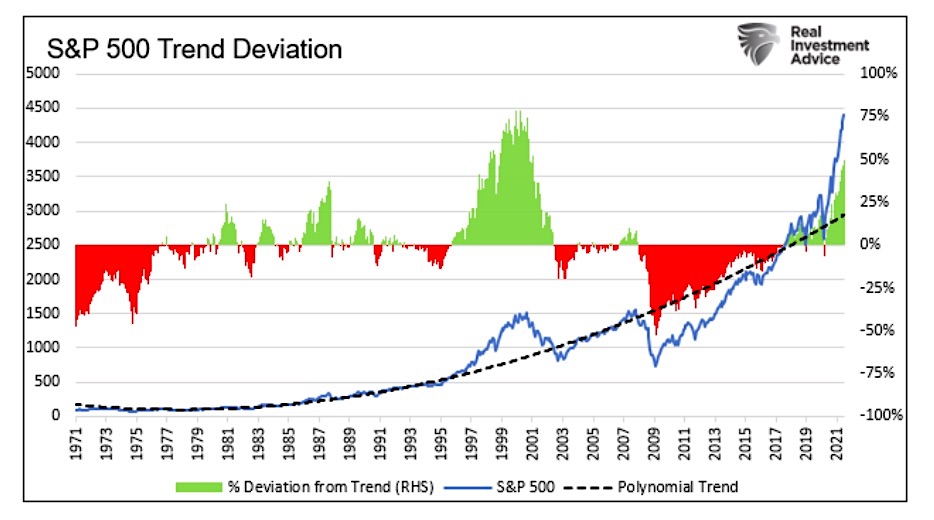
Currently, the S&P 500 is about 50% above the 50-year trend line. If Bob’s rule holds and the S&P reverts to the trend, an approximate 33% correction lies ahead.
The only other time the market was this extended from its polynomial trend in the last 50 years was in March 2000. At the time, it was 78.4% above the trend line. In the three years following, it fell nearly 50% and dipped almost 20% below the trend line, leading us to rule #2.
Rule #2: Excesses in one direction often lead to excesses in another direction
Rule number #2 is an extension of rule number #1. Expectations for a retracement to the 50-year trend may understate losses if there is an excess in the other direction.
Rules #1 and 2, hold for prices and valuations. The table below shows 15 different equity valuations sitting at or near records. Reversion to their respective means will lead to large drawdowns. Excesses beyond the mean will be outright ugly.
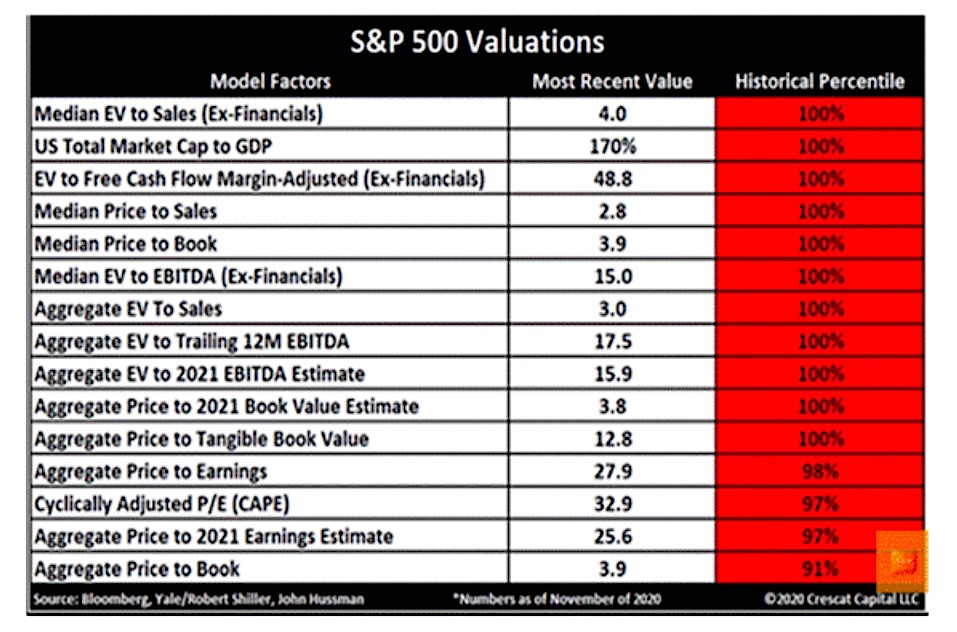
To help better fathom what rules #1 and 2 may hold for the market, we share the CAPE 10, a cyclical measure of price to earnings.
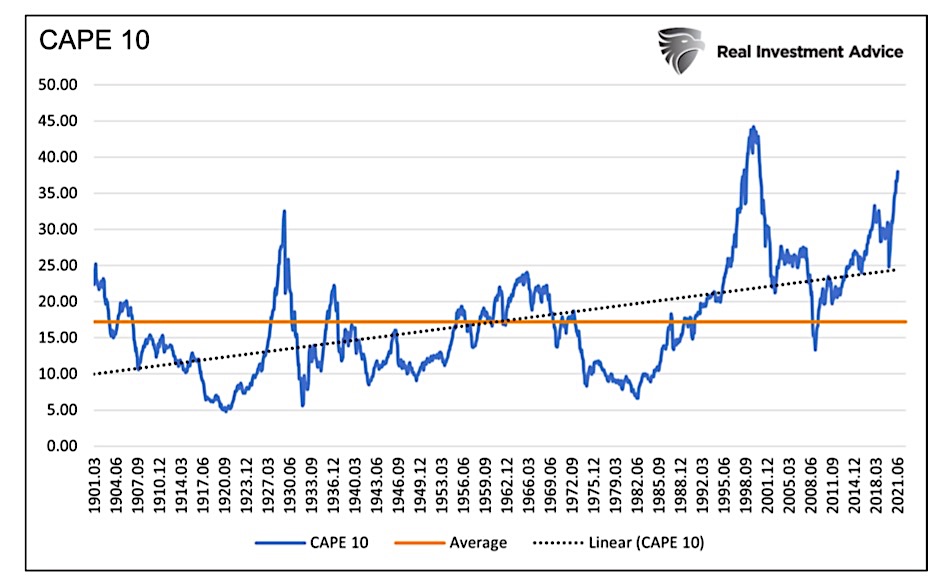
Based on 120 years of data, a reversion to the average and trend line results in 56% and 36% price declines, respectively. An excess reversion to the 2008 lows results in a 66% decline. A severe excess reversion to prior lows results in an 85% crash.
“To every action, there is an opposite and equal reaction” – Sir Isaac Newton
Rule #3: There are no new eras – excesses are never permanent
After considering where the market is regarding rules one and two, it is tempting to hope this time is different. Bob would call that wishful thinking. According to rule #3, this time is not different, meaning current valuations and prices will ultimately revert to their norms.
Equity investors are buying future cash flows. They might be dividends, coupons, or earnings. Regardless, over extended time frames, the expected cash flows and asset value tend to be well correlated.
Over short periods, however, optimism and pessimism create deviations between economic reality and valuations.
The Buffet Indicator is Warren Buffet’s favorite tool for comparing market valuations to economic activity. His simple measurement is the ratio market cap of the S&P 500 to GDP. If earnings and economic growth are adequately reflected in stock prices, we should expect the S&P 500 to rise in line with GDP. The ratio in such a case would be a flat line.
The graph below shows the ratio oscillates around the trend. Currently, the diagram implies a 55% correction to normalize the indicator.
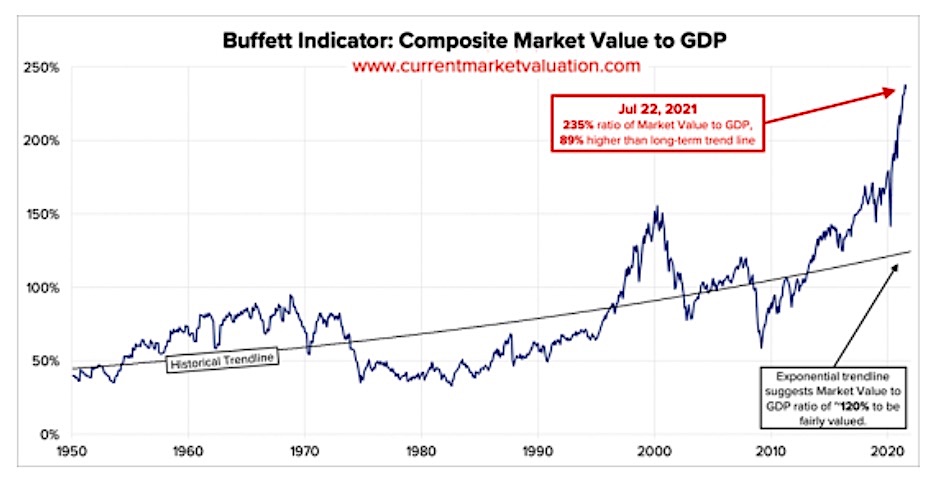
Rule #4: Exponential rapidly rising or falling markets usually go further than you think, but they do not correct by going sideways.
The reality of many bubbles is they rise well beyond what anyone thinks possible. They also tend to correct to levels well below what most can fathom.
The graph below highlights the emotional stages and price action of a typical bubble pattern.
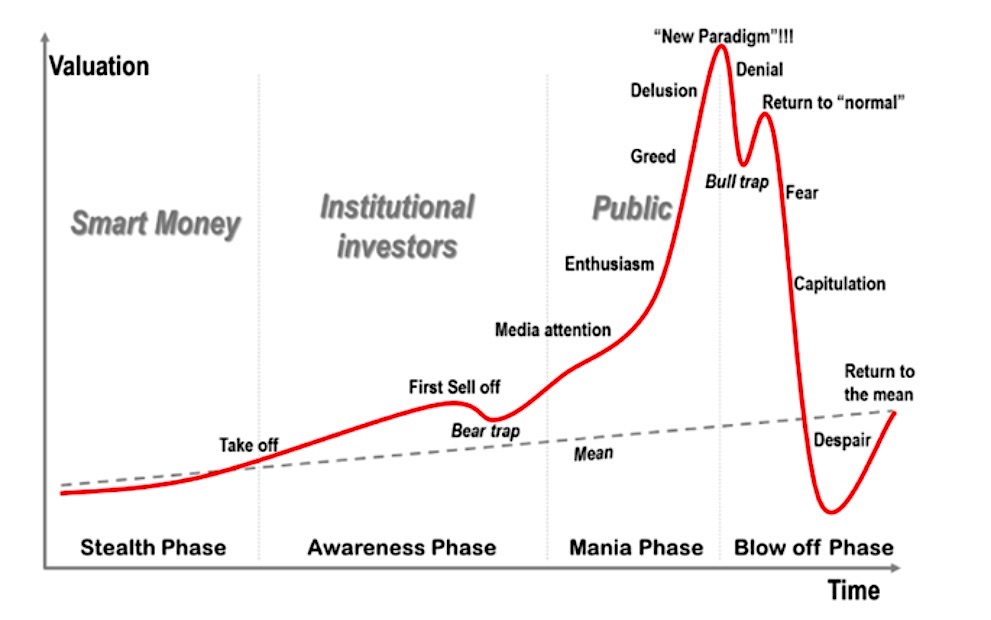
Rule #5: The public buys the most at the top and the least at the bottom.
Like it or not, retail investors, aka the public, are often called dumb money. Take it for what it’s worth, as the saying was made by professionals or so-called smart money.
Bob’s rule is logical as the public is usually more susceptible to psychological factors. Greed often gets the best of us. Think about how hard it is to sell a stock when it’s up 50%. At such times, investors are loathe to sell it because greed accentuates our FOMO (fear of missing out) on additional profits.
Smart money is equally susceptible to greed, but they often have risk management guidelines that limit their risk-taking ability.
Fear works similarly. An adage on Wall Street says investors are the only type of consumers that do not want to buy when prices go on sale. The fear of even lower prices is powerful, especially in larger routs when valuations make sense again.
Currently, retail investors are having a field day. Per JP Morgan, courtesy of Zero Hedge:
“The estimated retail investor net flow into US equities and ETFs from this methodology has been hovering at a very high $700mn per day pace in recent weeks (including the week ending July 30th). As a result, the monthly net flow for the month of July rose to a new record high of $15bn, surpassing the previous record high of $10bn in June by 50%!”
The graph below shows the public has more invested in this market than any time in at least 70 years!
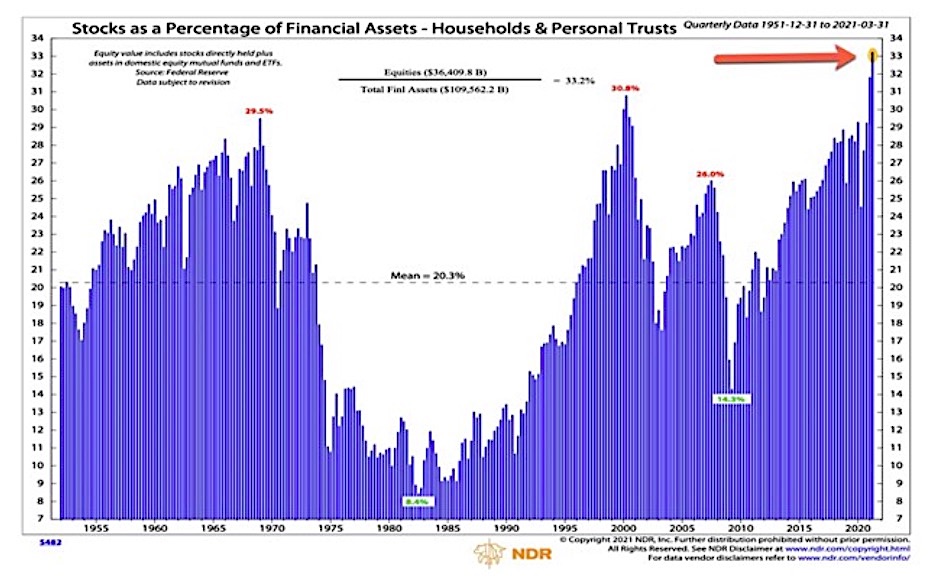
Summary Part 1
There is no doubt investors are ignoring the first five bits of Bob Farrell’s wisdom. If his rules prove accurate once again, there will be severe costs for investors to pay. Based on valuations, most investors are betting Bob’s rules are outdated and no longer apply. We doubt it.
Join us next week when we follow up with rules six through ten.
Twitter: @michaellebowitz
The author or his firm may have positions in mentioned securities at the time of publication. Any opinions expressed herein are solely those of the author, and do not in any way represent the views or opinions of any other person or entity.








